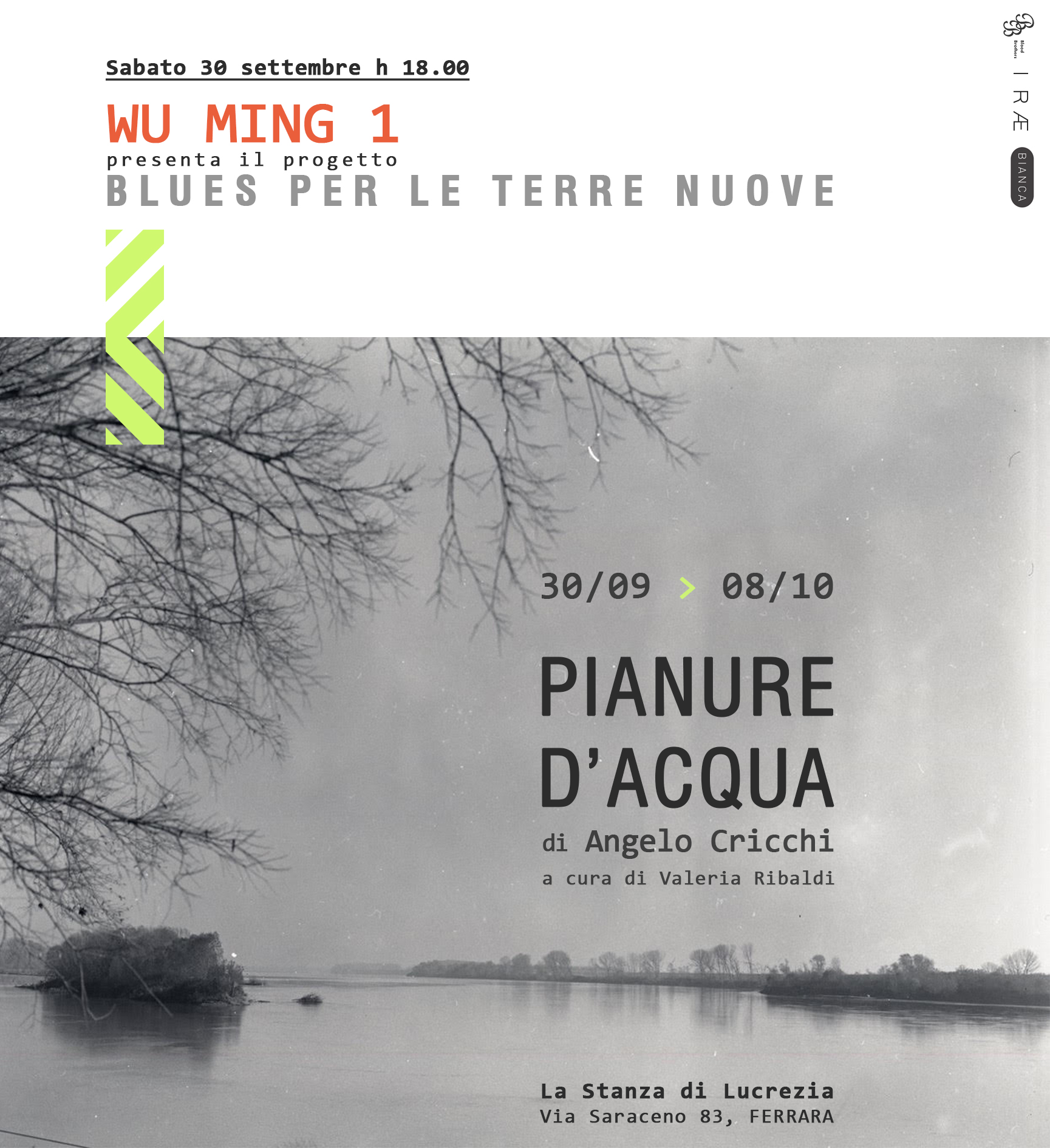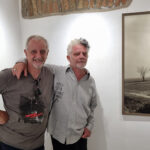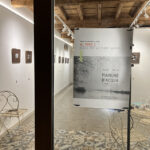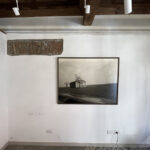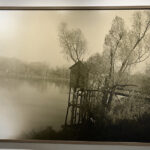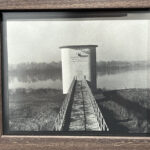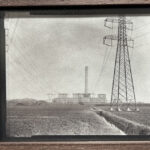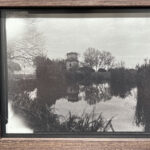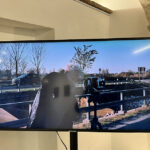Circondata da un mar Mediterraneo sempre più caldo, l’Italia è ormai costantemente esposta a fenomeni climatici estremi le cui catastrofiche conseguenze colpiscono soprattutto le zone ad alto rischio idrogeologico. Secondo l’Istituto superiore per la protezione e la ricerca ambientale (Ispra), il 94 per cento dei nostri comuni è minacciato da inondazioni, smottamenti e dall’erosione costiera: con i suoi oltre duecentomila ettari di terreno cementificati, l’Emilia Romagna è la terza regione per consumo del suolo e la prima per edificazioni su aree alluvionali.
E’ in questo scenario che richiama l’imminente disastro climatico, che nasce il lavoro Pianura D’acqua. Un lavoro fotografico e narrativo portato avanti dal fotografo Angelo Cricchi e dallo scrittore Wu Ming 1, entrambi spinti dall’urgenza di fermare all’interno di immagini le caratteristiche di un territorio in costante e non lenta evoluzione.
L’area è quella tra Ferrara e il Delta del Po, che come ci ricorda Wu Ming, è una zona che già si trova 4,5 metri sotto il livello del mare e subisce da anni un ulteriore inabissamento, basti pensare che in alcuni punti, dagli anni ’30 al 2008, il terreno è sceso di cinque metri.
L’uomo interviene da anni su questo territorio, dalle bonifiche, allo sfruttamento del sottosuolo, lascia costantemente i suoi segni sin dall’antichità.
Nelle immagini di Angelo Cricchi però, la Pianura d’Aqua sembra un luogo fermo; quasi quelle antiche case contadine, quelle palafitte e quegli impianti industriali fossero sempre stati lì e non dovessero mai arrendersi alla falce del tempo. Un viaggio che si insinua nell’interiorità dei ricordi, grazie alla sua capacità di catturare attraverso la luce, atmosfere romantiche, paesaggi e frammenti di tempo uniti da un’unica grande presenza: quella del fiume.
Case abbandonate, cascine in rovina, strade di campagna, campi spogli, distese d’acqua. Le immagini di Angelo Cricchi restituiscono una pianura non vissuta, in cui l’elemento umano non a caso è assente.
Si avverte lo spettro di un futuro in cui l’acqua ritornerà ad occupare i suoi spazi, per cui non basterà più modificare il territorio con impianti idraulici o arginare con interventi di prevenzione luoghi ormai pregiudicati dall’intervento umano.
L’unica strada sarà quindi un più ampio ripensare ad una messa in discussione radicale del nostro stile di vita, diventato ormai insostenibile per l’intero pianeta.
Le immagini, precedentemente pubblicate sulla rivista IRÆ con il testo di WuMing1, sono riprodotte in formato 1:1 con la pellicola 4×5 oltre a due stampate in misura extralarge e saranno in mostra dal 30 Settembre all’8 Ottobre presso la Casa di Lucrezia a Ferrara .
PIANURE D’ACQUA
Valeria Ribaldi
Surrounded by an increasingly warming Mediterranean Sea, Italy is now constantly exposed to extreme weather phenomena whose catastrophic consequences especially affect areas of high hydrogeological risk. According to the Higher Institute for Environmental Protection and Research (Ispra), 94 percent of our municipalities are threatened by floods, landslides and coastal erosion: with its more than two hundred thousand hectares of cemented land, Emilia Romagna is the third region for soil consumption and the first for building on flood areas.
It is in this scenario, which recalls the impending climate disaster, that the work Pianura D’acqua was born. A photographic and narrative work carried out by photographer Angelo Cricchi and writer Wu Ming 1, both driven by the urgency to stop within images the characteristics of a territory in constant and not slow evolution.
The area is that between Ferrara and the Po Delta, which, as Wu Ming reminds us, is an area that is already 4.5 meters below sea level and has been suffering further sinking for years, suffice it to say that in some places, from the 1930s to 2008, the ground has dropped five meters.
Man has been intervening in this territory for years, from land reclamation to subsoil exploitation, constantly leaving his marks since ancient times.
In Angelo Cricchi’s images, however, the Plain of Aqua seems like a still place; almost as if those old peasant houses, those pilings and those industrial plants had always been there and should never surrender to the scythe of time. A journey that creeps into the interiority of memories, thanks to its ability to capture through light, romantic atmospheres, landscapes and fragments of time united by one great presence: that of the river.
Abandoned houses, ruined farmhouses, country roads, bare fields, expanses of water. Angelo Cricchi’s images render an unlived plain, in which the human element is not surprisingly absent.
One senses the specter of a future in which water will return to occupy its spaces, so it will no longer be enough to modify the territory with hydraulic systems or to stem with preventive interventions places now impaired by human intervention.
The only way forward will therefore be a broader rethinking of a radical questioning of our lifestyle, which has now become unsustainable for the entire planet.
The images, previously published in IRÆ magazine with text by WuMing1, are reproduced in 1:1 format with 4×5 film in addition to two printed in extra-large size and will be on display from Sept. 30 to Oct. 8 at the House of Lucrezia in Ferrara .
